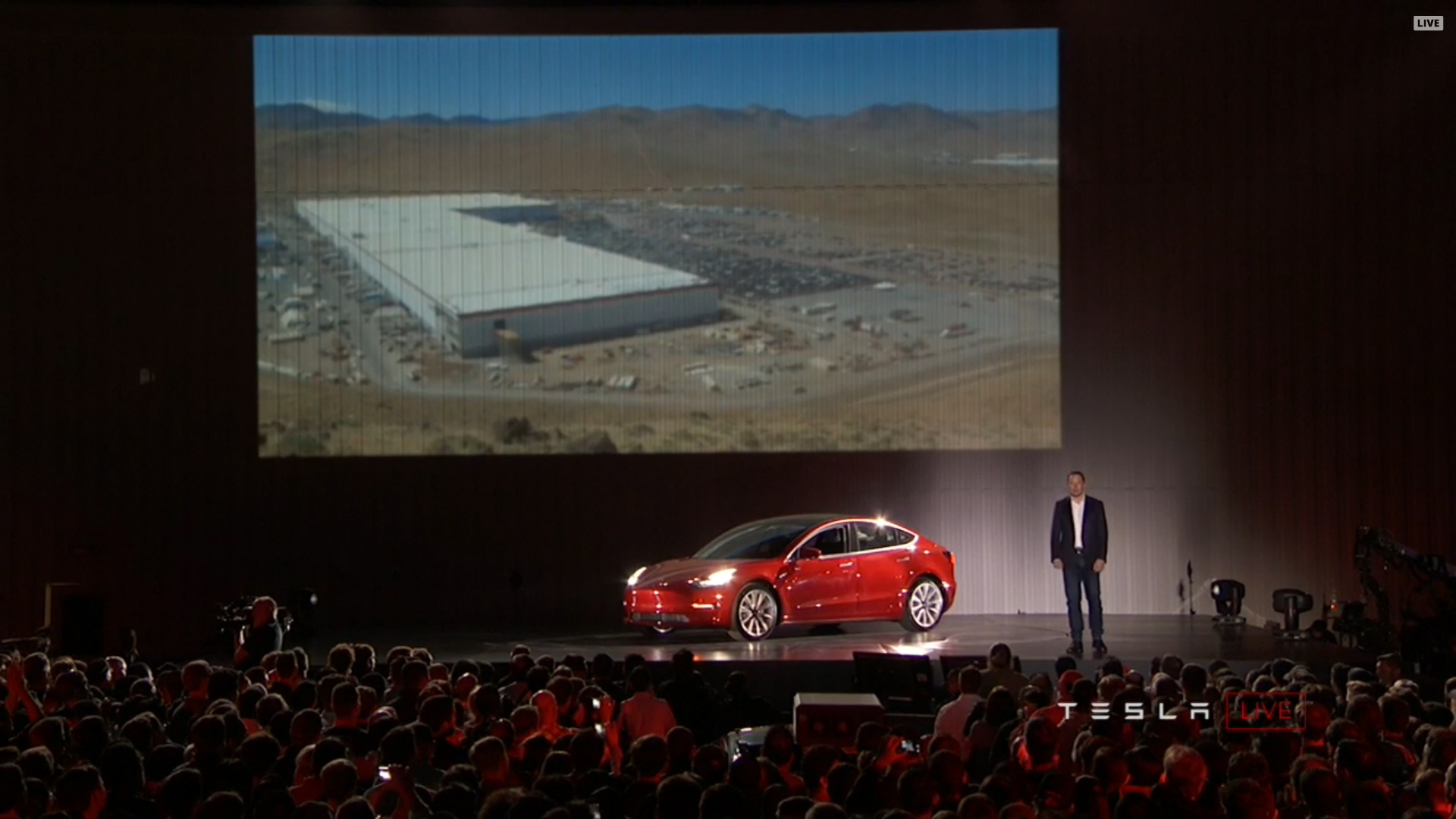

Tesla has finally revealed the specs of the Model 3 on Friday in light of its release event at the production facility Fremont, California. Offered in two flavors, the newly released sedan will have two battery options with surprisingly decent range. If all goes as planned, the Model 3 really will be the first mass-produced electric car which not only provides long-range, but is also affordable.
As stated above, two battery packs will be offered on the Model 3, “Standard” and “Long Range”. There is a significant price jump between the two ($9,000), but the range of the car is increased over 35%. Not a bad trade off, considering the Model S with equivalent range is the 100D, which costs $105,500 to start. If you live in California, you could even pay the price of a Prius to get your hands on one of Tesla’s newest toys. Below are the base specifications provided at the launch event:
Standard Battery
- Base price: $35,000 (“Fully loaded” with full self driving is $50,500)
- 0-60 in 5.6 seconds, top speed 130 mph
- 220 miles of range
- 130 miles of range per 30 minute charge
Long Range Battery
- Base price: $44,000 (25% more expensive) (“Fully loaded” with full self driving is $59,500)
- 0-60 in 5.1 seconds (9% quicker), top speed 140 mph
- 310 miles of range (35% more range)
- 170 miles of range per 30 minute charge
Surprisingly, Tesla didn’t announce the actual battery capacity of the vehicles. After people all over the internet tried to find the Model 3 battery pack by searching in the wheel well and underneath the car where the Model S would have one, a Reddit user proclaimed a Tesla employee confirmed that the stickers were hidden. This could either be a marketing decision to avoid bad press over small battery capacities, rebranding if a larger battery capacity is released (for example, when the dual-motor variant is released), or simply because the same size battery is used in both Models and a software limitation is in place to limit range on the less expensive of the two. The last option is unlikely due to the slower charging of the standard battery, indicating a smaller capacity, but this type of range occlusion did occur with the Model S so anything is possible.
Availability was also a concern addressed in the presentation. So far, 50 Model 3s have been produced, 30 are going to customers at the launch event, while 20 will be made available for testing. Priority is given to the single-motor long-range variant in order to simplify the manufacturing process of the Model 3. The standard battery will be more accessible in the Fall, and a dual-motor performance variation is expected by mid-2018. Production will continue to scale up to reach 5,000 cars per week by the end of 2017, and 10,000 cars per week by the end of 2018. A hefty number, but scaling is the key to rapid growth.
If you were to purchase a Model 3 today, you can expect your vehicle to arrive by the end of 2018. Consequently, a Model S or Model X purchase will be delivered within about a month. Deliveries of the Model 3 will be prioritize to Tesla and Space X employees, existing Tesla owners, and early reservation holders, assuming to not have the public “beta test” their cars.
With the last step in Tesla CEO Elon Musk’s Master Plan being fulfilled, the mass-produced electric car could cause an auto industry revolution if successful. Tesla needs to be able to pull off scaling in order to fulfill orders, and that is going to be the biggest challenge of them all.